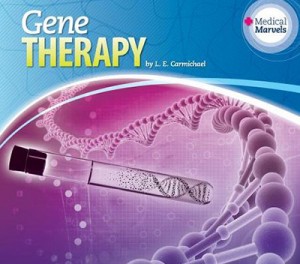 Welcome to Part 2 of my series on gene therapy! If you haven’t already, I recommend that you read Part 1, Introduction to Gene Therapy: It Sounds Simple, But It’s Sure Not Easy, before continuing with this post.
Welcome to Part 2 of my series on gene therapy! If you haven’t already, I recommend that you read Part 1, Introduction to Gene Therapy: It Sounds Simple, But It’s Sure Not Easy, before continuing with this post.
Ready? Here we go.
Viruses: FedEx For Genes
Gene therapy involves repairing or replacing a faulty gene that has led to disease. In order to do that, one major hurdle must be overcome: getting new DNA into the patient’s cells. Cells, however, are designed to keep things out. That’s why they have wrappers, called cell membranes. Scientists needed vectors: gene delivery systems capable of crossing the membrane.
In the early days of gene therapy research (by which I mean the 80s), the obvious way to cross the membrane was to use a virus. Viruses are highly efficient invaders – they have to be, because they are not capable of copying their own DNA. In other words, the only way a virus can reproduce and spread is to invade a host cell, hijack its equipment, and force the cell to package new viruses that can carry on the cycle of infection.
But what if scientists could replace some of the virus’s DNA with a therapy gene? The virus would invade a patient’s cells as per usual, but instead of causing infection, deliver some healthy human DNA. Sort of like molecular FedEx. Some viruses even contain DNA sequences that match sequences found in human DNA. These complementary sequences would prompt the host cell to incorporate the therapy gene into its own genome. Not only would the patient be cured, but the cure would be permanent.
What’s that line about how it seemed like a good idea at the time?
The Problem With Viruses
For starters, they are viruses. The human immune system is designed to find and destroy viruses, before they invade the body’s cells. This happens all the time, without our even realizing it. But sometimes, the immune system gets a little carried away.
That’s exactly what happened to Jesse Gelsinger in 1999. The 18-year-old was part of a clinical trial of a gene therapy for a genetic disease known as OTC. When he received the treatment, his immune system had a massive over-reaction to the viral vector and began attacking his own cells. He died just a few days later.
The Other Problem With Viruses
Remember I said that some viruses can insert their own DNA – or therapy DNA – into the human genome, making a therapy permanent? Early gene therapy research occurred before we sequenced the entire human genome. Scientists didn’t realize that complementary DNA sequences could occur in more than one location in a person’s DNA… or that some of those locations were inside other genes. No good providing DNA to cure one genetic disease if your cure is going to knock out another gene. Especially if that gene helps to controls cell division… because uncontrolled cell division leads to cancer.
That’s what happened to a number of young patients during an early clinical trial for the immune system deficiency SCID. And since those kids had compromised immune systems, they had no natural defences against the cancer their cure had created.
A Light at the End of the Tunnel
After these tragedies, scientists spent a lot of time searching for viral vectors that would NOT cause such horrific side effects. One type belongs to a family of viruses known as AAV. A gene therapy for Leber congenital amaurosis is built around AAV. It replaces a faulty gene in retina cells that causes children to go blind. And after decades of research, it looks as though this therapy will soon be available to the public. Developed by Spark Therapeutics, the treatment just received a unanimous endorsement from an FDA review panel, meaning approval for the therapy could be just around the corner – a literal light at the end of the tunnel for these patients.
So What is CRISPR, and Why Is Everyone So Excited About It?
A major downside of AAV viruses is that they do not incorporate their genetic package into the patient’s existing genome. Which means they don’t cause cancer, but also that the therapy gene can’t be reliably passed on to daughter cells. That’s OK for retinal cells, which don’t divide. It’s a lot less useful for treating diseases in other parts of the body.
CRISPR, on the other hand, works in all types of cells. It allows scientists to edit a patient’s existing genes – correcting the typos that cause disease – and the changes are permanent. Here’s how it works and why it’s such a big deal.
And yes. You still have to get the components for CRISPR into the cell in the first place. One group of scientists has just found a way to do this without using viruses. They used gold particles instead.
As you can see, CRISPR could lead to incredible breakthroughs, and not just in gene therapy. But there are concerns as well. Stay tuned for Part 3, where I will explore what’s perhaps the biggest one.